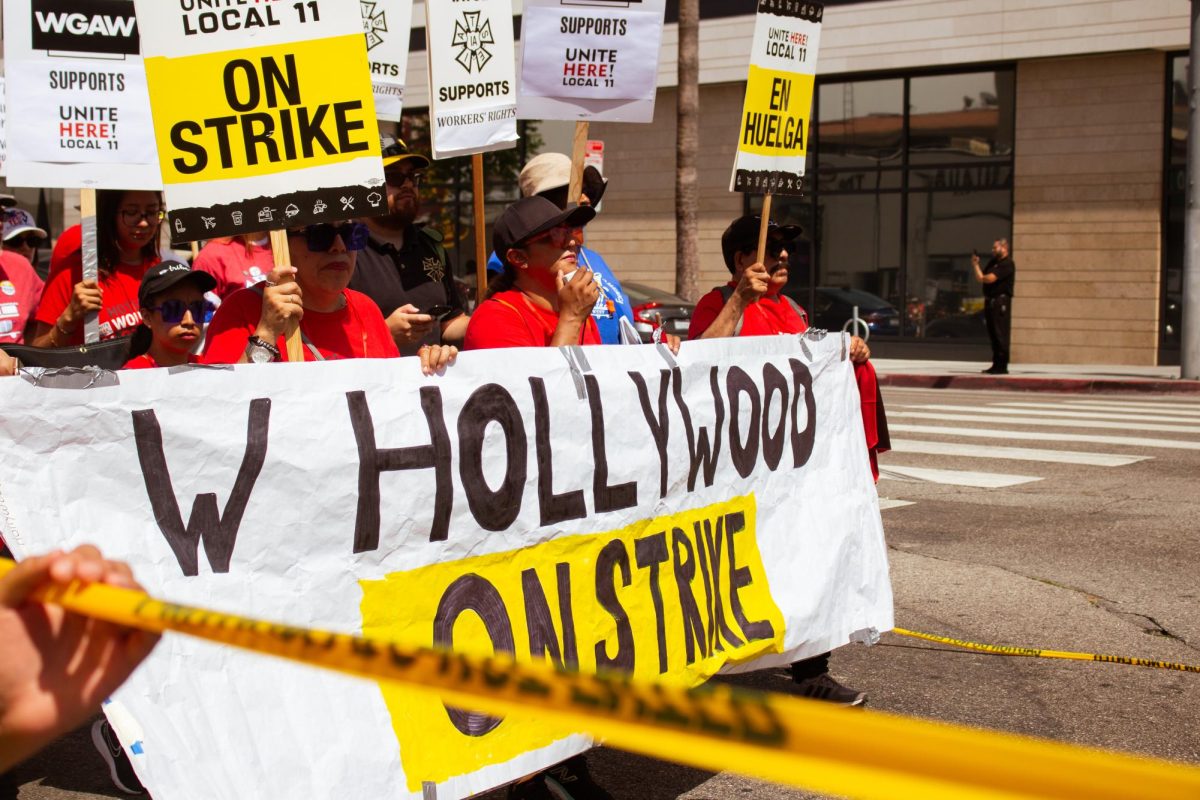In 2023, there was news of major strikes or union movements almost weekly. In May, writers in Hollywood went on strike, demanding better pay and residuals and protection against AI job threats. In July, actors joined the picket lines in solidarity with writers and because of industry changes caused by streaming platforms and new technologies like digital recognition. In September, auto workers walked off from their jobs because they were overworked during unprecedented times, like the COVID-19 pandemic and the 2008 recession.
Labor unions have created an important foundation for employee protection, workplace fairness, and societal progress. Things we take for granted like eight-hour work days, paid sick leave, workers comp and even weekends off are things that unions fought heavily for decades ago. Unions in the United States date back to the 18th century industrial revolution, but they have been making a huge comeback recently. These strikes and labor movements in 2023 have been coined as the “Summer of Strikes,” but the energy has been building the last few years.
When the Writers Guild of America went on strike against the Alliance of Motion Picture and Television Producers, it was the second longest strike in Hollywood history, with a 148-day labor stoppage. A few months later, when SAG-AFTRA followed suit, production in Hollywood was effectively halted. Those two months pushed back many prominent movies that were supposed to come out at the end of 2023.
It has been more than 60 years since SAG-AFTRA and WGA walked out at the same time, the last one dating back to 1960. On Sept. 24, 2023, the WGA and the majors studios and streamers settled on a tentative agreement that ended the over four-month long writers strike. Writers signed a contract that established a system of providing bonuses to writers based on viewership on streaming platforms like Netflix and Hulu. The three-year film and TV contract also consisted of raises for basic wages by 5% in the first year, followed by 4% in year two and 3.5% in year three. Because of the terms reached through the WGA, industry experts expect SAG-AFTRA to reach a similar deal.
Almost two months after the Hollywood strikes, the United Auto Workers in Detroit went on strike for the first time against the big three auto companies in the U.S.—Ford Motor Company, General Motors and Stellantis. They complained of having to put in more hours and take more risks during the COVID-19 pandemic without receiving enough pay to make up for these burdens. After the recession in 2008, auto workers voluntarily accepted cuts to pay and benefits, but haven’t gotten those back in the 15 years since.
Even president Joe Biden has joined the UAW picket line, the first time a U.S. president has done so. “The fact of the matter is that you guys, the UAW, saved the automobile industry back in 2008,” Biden said in a speech to auto workers. “You made a lot of sacrifices. You gave up a lot. And the companies were in trouble. Now they’re doing incredibly well and guess what? You should be doing incredibly well.”
Dating back to the 18th century industrial revolution, there was a surge of workers that were in need for representation. In the mid 1800s, during the day when the U.S. was in a free-labor market and trade workers experienced pay cuts, workers looked for a way to better their conditions.

Strikes are nothing new, and are making a comeback especially after the pandemic. These three major unions have been around since the 1930s, but a number of new unions have been forming in surprising industries in the 2020s. When COVID-19 hit at the end of 2019 and as the economy halted with the lockdown in March 2020 there was a decrease in labor strikes. However, since then—with the reopening of the industry, there has been a resurgence in labor. In 2023 alone, 362,000 workers went on strike compared to the 123,000 last year in 2022, stated by Cornell University School of Industrial and Labor Relation.
However, even with the resurgence of strikes, there is still a decline in union membership. The share of American workers in a union has continued to decline. The union membership rate fell by 0.2 percentage points to 10.1%—making it the lowest on record, stated by the Bureau of Labor Statistics for union data in 2022.
Here at Fullerton College, faculty have also been improving working conditions. Christie Diep, a professor at Cypress College and president of United Faculty, the union that represents the full-time faculty of the North Orange County Community College District, stated that up until 2021 full-time faculty at NOCCCD did not have medical coverage for their families. This is a benefit almost all other community college faculty in the state get, so it became the focus of union organizing. Diep said it took almost 10 years, with enormous amounts of work, to achieve this benefit. “This benefit alone exponentially impacts faculty and families for generations to come,” she said. She also noted several other wins that United Faculty accomplished in the 2020s, such as flexible scheduling that allowed faculty to schedule their classes, office hours and meetings remotely.
Having a union means workers don’t have to fight for fair pay on their own. They don’t have to worry about whether they are getting paid less than their colleagues for the same type of work. “For example, because of our union, women receive the same pay as men for the same work. By law, our district administrators must negotiate our salaries, benefits, and working conditions and abide by the contract our members approve,” said Diep.
Part-time faculty have also won unprecedented benefits because of labor unions. Up until the fall of 2022, if part-time faculty wanted to hold office hours to give their students extra attention, they had to do so without pay. AdFac United is the labor union that represents part-time counselors, instructors, and librarians at NOCCCD. Adjunct, or part-time instructors, make up two-thirds of the faculty at Fullerton College, so they are teaching a majority of the students.
Dashiel Johnson, the executive director for AdFac United, said that paid office hours has been a huge win for them. He mentioned that this was significant because it not only gave faculty the pay that they deserve, but also allowed students to have better access to adjunct faculty.
AdFac also fought for health care for part-time workers, which is unheard of for most adjuncts, who are usually juggling multiple part-time jobs at different colleges. AdFac, through collective bargaining, was able to convince the district and won full health care benefits for part-timers teaching at least two classes each semester, a huge win for part-time faculty. “This allows the district to recruit and retain the best adjunct faculty, which is what our students deserve, and helps improve our district greatly,” said Johnson.
United Faculty and AdFac were able to get these contract wins without having to go on strike. Going on strike is not an easy decision for workers, it means going without pay, and potentially losing your job if you are part of a newer, smaller union without as much power. Whether it’s protesting at a board meeting, as Fullerton College faculty have been doing, or going on strike, like Hollywood workers and auto workers, in the end, union organizers hope the effort will be worth it. As Diep puts it, referencing a popular chant from labor marches: “Workers united can achieve great things together.”
Taken from the Fall 2023 print issue of Inside Fullerton. Read it here.





